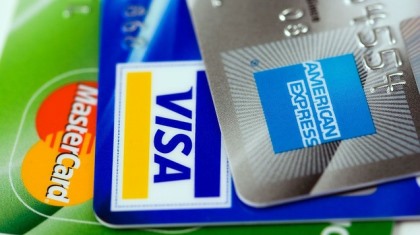Direct debits can help you organise your finances. Make sure you understand how they work and what to do if you want to cancel them.

What is a direct debit?
A direct debit is an automatic transaction that transfers money from one person’s account to another. Direct debits are processed electronically and are typically used for recurring payments, such as your private health insurance or gym membership.
Direct debits can be a fixed amount or a variable amount, depending on the type of service you are using it for.
How direct debits work
When you set up a direct debit, you are allowing a service provider to automatically withdraw money from your account at set times to pay your bills or make your loan repayments.
Direct debits or automatic payments can be a good way to manage your money, but they can become a problem if you don’t have enough money in your account or you need to cancel the direct debit.
How to set up a direct debit
There are two ways you can set up your direct debit:
-
You can fix your direct debit at a certain amount, say $70 every period
-
You can opt for a variable amount, where the merchant will deduct the exact amount of each bill.
You can also choose if the direct debits come out at regular intervals or set dates. If you choose a variable payment make sure you always check your bill before the amount is deducted so you know how much is being taken out.
It’s a good idea to set a fixed amount if possible and a fixed date for your direct debits. Set it up for the day after your payday. This will mean you will always know exactly how much money is coming out and you will definitely have enough money in your account to cover the bill.
Is a direct debit your best option?
Direct debits can be a convenient way to pay your bills, but they take the control of making payments away from you. If a business offers a discount or cheaper rate for setting up a direct debit, ask if you are eligible for the same discount if you set up an automatic payment through your online banking.
The company you are dealing with controls the direct debit, but you can start, stop and change an automatic payment yourself.
Things to consider when setting up a direct debit
Before you set up a direct debit, make sure you trust the direct debit service provider. After all, you are allowing them to take money from your account.
Even though it can be dull, read the service provider’s terms and conditions. It can save you pain and money in the long run.
Before agreeing to a direct debit ask yourself:
-
Do you trust the service provider you are dealing with?
-
Do you know how to cancel the direct debit if you decide you don’t need it anymore?
-
Are there other ways to the pay the business other than direct debit?
Be wary if you are being pressured into setting up a direct debit and are given no other payment options.
Check your bank account and bills
Mistakes can happen so check each bill to make sure you aren’t wrongly charged for anything.
You should also monitor your bank account so you know when money will be debited and how much you need to keep in your account to cover your bills.
If you don’t have enough money in your bank account to cover the direct debit, you may end up being charged a dishonour or overdraft fee by both your financial institution and the merchant.
How do you stop a direct debit?
If you decide to stop a direct debit being taken from your account, you should notify your financial institution in writing. Note in the letter what date you would like your direct debits to be cancelled and ask for a letter from your financial institution confirming your request.
Once your financial institution has received your instruction letter, they are obliged to make sure no more payments are debited from your account. They must also forward your instruction to cancel the direct debit to the service provider’s financial institution.
It’s also a good idea to notify the direct debit service provider in writing and a keep a copy of the letter you send. You will be able to find the service provider’s details on the form that you signed to authorise the direct debit. Use the sample letters below.
What if the direct debit is not cancelled?
If your financial institution does not cancel your direct debit and your account is debited after you have requested it to be cancelled, your financial institution can’t charge you overdraft fees to cover the debit. If you are wrongly charged, you should make a complaint and your financial institution should reimburse your account. See how to complain.
Cancelling a direct debit that is linked to a credit card
There are different requirements for cancelling a direct debit that is linked to a credit card. When cancelling these types of direct debits, you need to write a letter to both your financial institution and the merchant, to stop the direct debits.
Sample letters to cancel a direct debit
Use our sample letters to help you cancel your direct debit:
Sample letter to service provider to cancel direct debit
Sample letter to bank to cancel direct debit
Make sure you keep a copy of the letters for your records.
Problems with direct debits
If you check your bank statement and spot an incorrect charge or an unauthorised direct debit from your account, you should contact your financial institution as soon as you can. If you are unhappy with their response, you can make a complaint to a dispute resolution scheme.
If you are thinking of using direct debits, set them up in a way that fits your budget. Monitor your bills and accounts regularly to make sure the right amount is being debited.
Source : ASIC Moneysmart August 2107
Important note: This provides general information and hasn’t taken your circumstances into account. It’s important to consider your particular circumstances before deciding what’s right for you. Although the information is from sources considered reliable, we do not guarantee that it is accurate or complete. You should not rely upon it and should seek qualified advice before making any investment decision. Except where liability under any statute cannot be excluded, we do not accept any liability (whether under contract, tort or otherwise) for any resulting loss or damage of the reader or any other person. Past performance is not a reliable guide to future returns.
Important
Any information provided by the author detailed above is separate and external to our business and our Licensee. Neither our business, nor our Licensee take any responsibility for any action or any service provided by the author.
Any links have been provided with permission for information purposes only and will take you to external websites, which are not connected to our company in any way. Note: Our company does not endorse and is not responsible for the accuracy of the contents/information contained within the linked site(s) accessible from this page.


